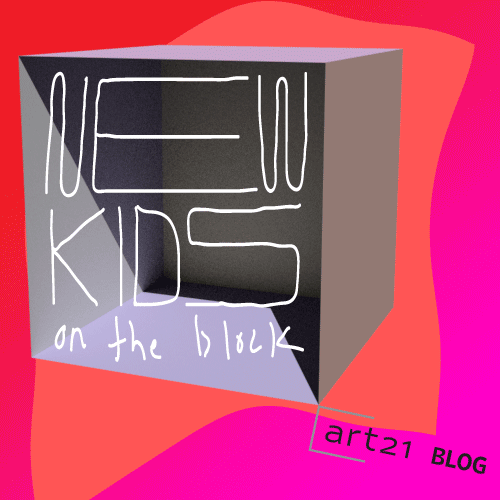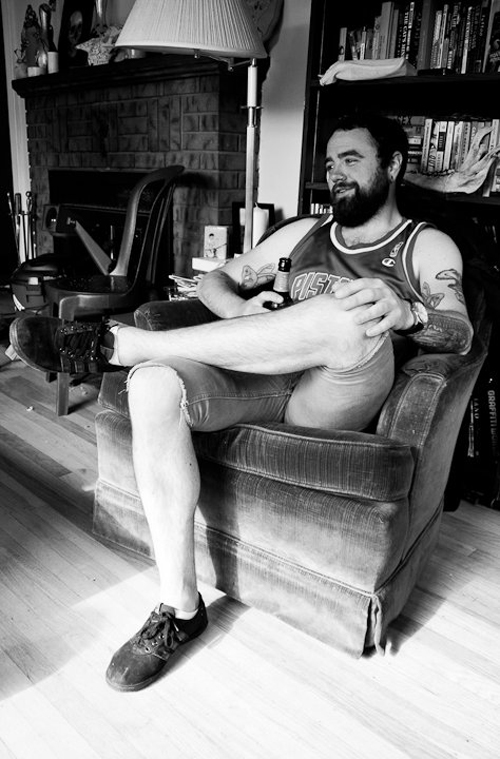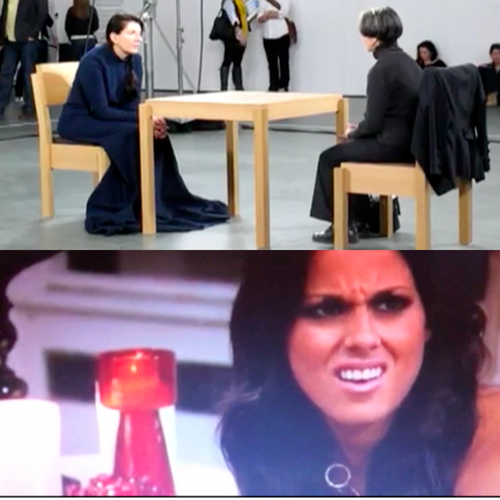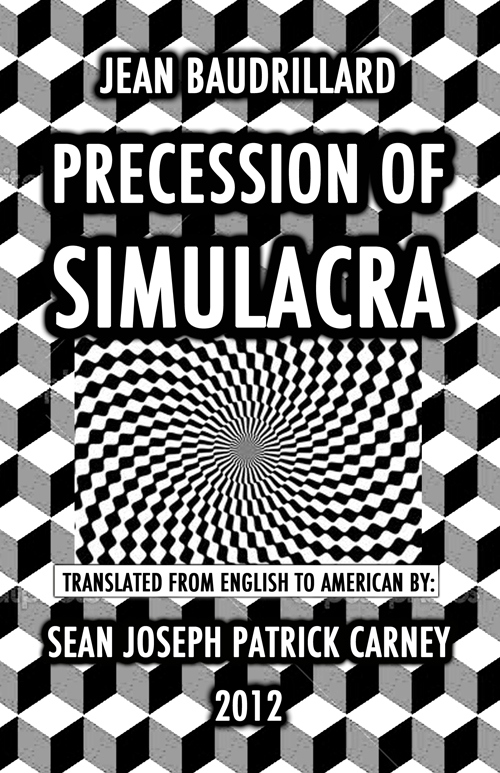What lured me to Sean Joseph Patrick Carney’s work? Beer. Cheap beer, to be exact.
I spied a cooler of free PBR inside Printed Matter’s Chelsea store on Tenth Avenue after an evening of openings last April. Bombarded by flashy media, I gravitated to the most basic book I could spot in the store: a black and white, stapled pamphlet printed on cheap paper. The bold, sans seraph font of the title was in all caps. It was Walter Benjamin’s “Work of Art in the Age of Mechanical Reproduction” (1936), or rather, it was Sean Joseph Patrick Carney’s reproduction of that text, translated from English to American.
Critical theory such as Benjamin’s essay can be dense. Carney’s translations, I assure you, are anything but. Like Carney’s diverse practice, which includes a detailed narrative of a bad acid trip and a performance in which strangers were invited to wax his chest hair, his texts intend to amuse and arouse an audience.
Carney’s work might sometimes inform an audience, too. When I caught up with Sean last month at the MoMA PS1 Book Fair, an onlooker glanced at his newest book, “The Precession of Simulacra” (a translation of a chapter of Simulations and Simulacra written by Jean Baudrillard in 1981), and casually asked, “So if I read this, I will, like, understand this stuff?”
“Totally,” said Sean, without even a hint of sarcasm.
[The following interview took place via email in October of 2012.]
Jacquelyn Gleisner: Why so many names, Sean Joseph Patrick Carney?
Sean Joseph Patrick Carney: “Patrick” was my confirmation name in the Catholic Church when I was twelve. I never used it until I was in graduate school when I realized that my first and last name were not particularly Google-friendly. You see, there’s this chubby, middle-aged fellow from Ohio or some such place who plays in a blues band called the Sean Carney Band. Searching for “Sean Carney” at that time turned up almost exclusively YouTube videos of him noodling lead to white-washed twelve bar blues. To distance myself from him as much as possible, I opted to start using my full Irish Catholic name.
JG: You have many names and you wear many hats. Your multi-faceted practice includes writing, curating, making videos and installations. You’re also a stand-up comedian. Can you describe how these different roles are part of a larger picture for you?
SJPC: Naturally, I’m tempted to reply with a self-aggrandizing diatribe about how the contemporary is entirely hinged on artists engaged in interdisciplinary practices, but a more honest answer is that I’m not exceptionally talented at any one of those things. As a type of compensation, I tend to attempt to produce a wide variety of works that are in conversation with one another.
JG: If you’re lacking in talent, why not quit? Why make art?
SJPC: Well, I do have a nominal amount of talent – certainly as a song and dance man. I think the motivation to create art, for me, is simply that there is an idea or a form that I think is funny or that I’d like to see and so it’s then on me to produce it.
JG: Are your various methods of production connected?
SJPC: Yes, I think my practice is cohesive both in aesthetic terms and in its content. Humor is important and integral to my engagement in visual art in a way that I can’t actually describe in words. Many of the ideas that I’m generally trying to tackle are things I’m often afraid I don’t fully understand.
JG: What role does writing play?
SJPC: Writing is a really important thing that I do daily. Whether it’s fiction, pop culture philosophy, or rewriting seminal works of critical theory in American, I’m employing the angle of humor so that my reader or viewer can go to that space of investigation with me. I also run a label called Social Malpractice Publishing that produces book projects for artists. It originally began as a vehicle for my own writing, but has since become a forum to distribute multiples by underrepresented artists. In terms of my own work and writing though, I’m not an expert about anything and don’t purport to be. The goal is to bring a level of engagement, entertainment even, to anybody who reads my writing or sees a performance piece.
JG: Your video Who is the Artist who is Present? (2012) is both engaging and entertaining. In this piece, you spliced footage of Marina Abramović’s 2010 retrospective (“Marina Abramović: The Artist is Present”) at MoMA with a scene from television’s The Bachelor. Why did you combine the two?
SJPC: I thoroughly enjoy watching television and had never seen The Bachelor before this past year. It sucked me in and I watched every episode. There was this one awful girl on it who, when an ex-lover of the Bachelor was introduced into the mix as a surprise challenge to contestants, made this horrible gawking face and yelled, “Who is she?!?” I cannot recall why, but I immediately imagined that girl having been dragged to MoMA by a friend and stumbling across a huge line of people waiting eight hours to sit across from Abramović just to look at her for two minutes. It seemed like that would be the natural thing for her to say in that situation.
JG: By now, we all concede that Abramović is not a feminist – she should be the next Bachelorette, don’t you think?
SJPC: Oh, I’d love to see that. She would definitely have to be the star. And then like two thirds of the way through the season, when it’s down to only four or five candidates left, the producers just blow everybody’s minds by having Ulay show up and he’s got a rose so she can’t dismiss him at the end of that episode.
JG: Reality TV is a central theme in another one of your works, a performance from 2012 called AbJackass in which you reference both the stunt TV show Jackass and the writings of Julia Kristeva. It’s another odd pairing. Why would you do this?
SJPC: There isn’t such a division between these levels of culture to me anymore. I don’t subscribe to the “Art is Life” mantra at all, but I do think that a common denominator in virtually all areas of contemporary culture is the entertainment factor. A lot of artists would dislike having their work contextualized as entertainment, but if it isn’t, why do people look? Entertainment has a pejorative connotation in visual arts that irritates me – especially in terms of performance art. Why would I ever want to watch you do literally nothing for forty-five minutes in some sweaty, disgusting warehouse in Bushwick? Being obtuse doesn’t make your work intellectual in any capacity whatsoever, and performance that alienates audience members is self-indulgent and completely lame in my opinion. There’s a difference between challenging your audience and asking me to stare at you moving a bowl of water with your nose across a room.
JG: On a lighter note, MFK: Baudrillard, Benjamin, Foucault.
SJPC: M: Benjamin (although a bit of a mystic, very level-headed and loyal)
F: Foucault (he talked about it enough, so he must know a trick or two)
K: Baudrillard (more like “Bummer”-drillard, am I right?)
JG: Finally, what’s next for you?
SJPC: I spent the past two months in Canada as an artist-in-residence at the Banff Centre. The program was called the Experimental Comedy Training Camp and was led by Michael Portnoy, who is absolutely hilarious. I’ve created numerous new performance and video works and I’m looking forward to exhibiting them in the near future.
I’ve also grown much more interested in pursuing my performances in the way that rock bands do their own, and am hoping that I can do a tour with a few other artists perhaps in the spring or summer of 2013. Until a couple of years ago, I’d played in bands for almost fifteen years and I much prefer the energy of a bunch of drunk hooligans at a bar to that of the typical gallery audience.







